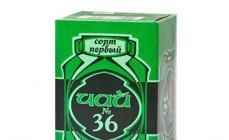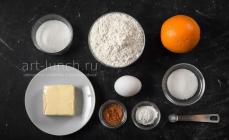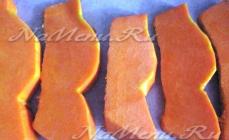Can you imagine what kind of bag of cloves or some exotic pepper a person can sacrifice their life? But this is exactly what happened before the beginning of the 19th century. Spices were available only to the rich. For their sake, whole expeditions were made to countries that were at the end of the earth, they were more expensive than gold. Just think about the fact that the surviving members of Magellan's expedition, returning from a three-year voyage, having lost four ships out of five and all their property, were able not only to repair the damage, but also to remain profitable - all thanks to the spices that remained on the last ship.
Please do not confuse noble natural spices with chemical flavor enhancers. Choose only which, by the way, you can find in the online store of the same name. Special attention should be paid to the author's blends: "For coffee", "Nut", "Mushroom", "Mix of roots", "Mexico", "Italian". If you are new to spices, then ready-made kits are a great choice for you. The store sends orders all over Russia, so you will receive spices even if you are on the very edge of the country. The prices, by the way, are also pleasing.
Spices in your kitchen are real treasures. And you must be able to use them.
1. Cayenne pepper
The most important spice in the arsenal of men's cuisine. Yes, this is not the hottest pepper in the world, but if you use it skillfully, you can bring the pungency of cayenne pepper to the required limit. If you do not like strong spiciness, then by adding quite a bit of it, you will add spice to almost any dish.
If you have access to fresh cayenne peppers, be sure to dry a couple - you can use whole dried peppers for soups, they give a good spice. We recommend using chopped or crushed peppers in sauces, stews, pasta, Indian, Mexican and Spanish dishes. This pepper is great for marinating meats for charcoal frying and for cooking ground beef. It is worth mentioning separately that cayenne pepper is an integral component of a number of alcoholic cocktails, in particular, the Bloody Mary cocktail.
2. Paprika
The cult Italian director Tinto Brass even has a film about a girl named Paprika in his cage, so be sure that this spice will not be superfluous in cooking. Paprika can be different: sweet, slightly spicy, even smoky.
It will be difficult for you to make delicious goulash without paprika; we also recommend using paprika in dishes with fried potatoes or in preparing potato salads. When it comes to meat or soups, it is best to use paprika in meat recipes. Fish soup with paprika will seem strange, but Asturian fabada (traditional Spanish meat soup) will not do without paprika. And yes, if you cook hamburgers, then add some paprika to the minced meat for the cutlets - this will make the burgers much tastier.
3. Parsley
Parsley is often underestimated and is a great herb that can be used in as many ways as possible. It has a fresh, even "green" taste that makes spicy and heavy food easier to eat.
Parsley is good in soups, sauces, stews, boiled rice. We recommend using parsley in dishes where fish is the main ingredient, or in oriental dishes. If you cook food based on tomato sauce, then parsley will in no way harm its taste, on the contrary, it will reveal the usual food from a new side. If you like heavy dishes with garlic, lemon flavor, then parsley will make your food better again.
4. Oregano
Surprisingly fragrant, fresh and peculiar spice, without which a lover of Italian, Mexican, Greek, Cuban cuisine cannot do - it has a peppery, somewhat earthy, aromatic smell. We recommend keeping it not only dried, but also fresh - even a tasteless piece of meat will make oregano tasty.
Oregano goes well with vegetables, beef stew, various sauces (not only tomato, but also sour cream), as well as meat and fish in general. Even beans with oregano "sound" tastier. In other words, it's a pretty versatile spice that can be used everywhere. The only question that remains is where this spice should be used in large quantities. The answer is: homemade tomato sauces, pizzas, lasagna, beef and pork marinade.
5. Carnation
Once a very expensive spice, through the fault of which ships were sinking, seafarers were eaten by the natives. Fortunately, today you can allow carnation buds without any danger to yourself. The clove itself resembles a cross between allspice and cinnamon in aroma.
In our opinion, food without cloves loses the lion's share of individuality. Especially when it comes to broths, meat, pastries, vegetables and desserts. Cloves are also indispensable, along with citrus fruits, in the preparation of hot alcoholic cocktails such as grog or mulled wine. Just remember that you cannot throw a carnation in handfuls - a few buds are enough.
6. Curry
Curry is not a single spice, but a whole mixture of turmeric-based spices. Typically, curries can include cumin, coriander, ground red pepper, cardamom, cinnamon, ginger, and garlic. Therefore, if you take curry in different places, then there is a high probability that the mixture will seriously differ in taste. Actually, curry is good because you can limit yourself to this spice - add a couple of teaspoons to meat, beans, vegetables, and everything will be gorgeous.
Curry goes well with chicken, potatoes, fish, cauliflower, onions, various marinades, and rice. Curries should not be used in soups because the flavor of curries can easily drown out more subtle spices like cloves.
What dish can do without seasoning! When used correctly, a bouquet of spices can change the taste of food beyond recognition, adding versatility and completing a culinary masterpiece. Traditional "salt-pepper to taste" can be found in any recipe, but what else is rich in the world of spices? I have selected 10 of the most popular spices from around the world that you should put on your kitchen shelf. I share the secrets of their use and useful properties, because as you know, spices are not only designed to improve the taste of dishes, but also to heal the body.
Pepper-peas
The spice that conquered the whole world. Even bachelors from jokes cannot imagine the eternal dumplings without her. A more gourmet option is considered to be a five-peppers mix, which includes white, green, pink allspice and black peppercorns. Such a spice is famous more thanks to its fragrant aroma, and not its pungent taste.

How to use: Small amounts of ground pepper are appropriate in most savory dishes - soups, potato and mushroom casseroles, meat dishes, sauces and sausages. Properties: essential oils of pepper increase appetite, normalize the functioning of the digestive tract, increase immunity. According to some reports, pepper helps with diseases of the bronchi and lungs, removing phlegm.
Cinnamon
Many people associate the smell of cinnamon with Christmas and fairy tales! Perhaps it is for its ability to bring back good memories that cinnamon packaging can be found in every kitchen.

How to use: perky cinnamon with its delicate rich aroma is usually used as an ingredient in muffins and fillings for sweet pies, but the taste will also be appropriate in complex sauces, meat gravies, lamb dishes, poultry and vegetables. A pinch of cinnamon can also enhance the flavor of hot chocolate, smoothies, and coffee. Properties: this spice is an ingenious antiseptic, antipyretic and expectorant medicine, is a powerful immunostimulating agent. Cinnamon also helps with high cholesterol and blood sugar levels.
Nutmeg
Nutmeg is one of the favorite spices of confectioners and chefs around the world. We recommend getting a package of ground nutmeg and enjoying its delicate taste and aroma!

How to use: Nutmeg is most often used in baked goods and confectionery, but its delicate taste will be very appropriate in savory dishes. Minced meat, cream soups, creamy pasta sauces, mushroom fillings will only benefit from adding it. Properties: first of all, nutmeg has pronounced sedative properties, which is why it is recommended to add a pinch of spice to "soothing" warm milk with honey before bedtime. But the essential oils of freshly grated nutmeg have a beneficial effect on the work of the respiratory system and are even capable of "piercing" a stuffy nose.
Ginger
A fragrant spice, valuable for its versatility. Unfortunately, it is not always possible to find fresh rhizomes, so the dried granulated spice will always come to the rescue at the right time.

How to use: The hot taste of ginger will find its place in many recipes - add a little spice to meat or oriental vegetable dishes, rice and baked goods. By the way, ginger goes well with other spices with both sweet and spicy bouquet. Properties: scientifically proven that ginger speeds up metabolism and helps with weight loss. Also, the spice enhances the work of digestion, helps with colds, promotes the elimination of toxins and increases cerebral circulation.
Curry
The most famous spice in Indian cuisine gets its name from the leaves of the curry plant, but unfortunately, at best, only dried leaves make it to our edges. The most common curry you can buy in Russia is a mixture based on turmeric, which gives the seasoning a yellow hue, and other ingredients such as cayenne pepper, cardamom and coriander.

How to use: Add curries to rich sauces with rice, vegetable dishes and broths. Properties: curry enhances digestion, stimulates the liver, heart and blood vessels, removes toxins and normalizes metabolism.
Italian Herb Blend
In each of the provinces of Italy, experienced housewives make their own set of spices, but the most popular in the world is the mix of basil, oregano, thyme with the addition of green onions and garlic.

How to use: The rich bouquet of aromatic herbs is ideal for soups, vegetable dishes, rice, pasta and savory pie fillings. Properties: The most valuable ingredients in this blend are essential oils, which have a beneficial effect on health. Italian herbs accelerate metabolism, stimulate appetite and are a natural antiseptic.
Dried garlic
Of course, fresh garlic is an indispensable thing in the kitchen, but dried garlic is in no way inferior to it in benefits, taste and aroma. This spice can be purchased in the form of powder, granules and flakes.

How to use: dried garlic is literally created for dishes from meat and vegetables, poultry, soups, sausages and jellied meat. Another culinary plus of granulated garlic is that it does not burn or turn black when cooked in the oven. Properties: garlic is the main source of natural phytoncides that protect the body from viruses and bacteria. Strengthens the immune system, cleanses the blood and helps fight colds.
Paprika
Paprika is another popular "peppery" spice known to us for its Mexican, Hungarian and German cuisine. It is obtained from ground sweet peppers, so it has a moderate pungency and a greater depth of taste.

How to use: The best paprika companions are pork, chicken, vegetables, tomato sauces, cheese, fish, seafood, and stuffed eggs. In addition to taste and aroma, paprika imparts reddish and orange hues to dishes. Properties: ground red pepper improves appetite by stimulating the work of the digestive tract and pancreas, has a positive effect on blood circulation and is even recommended for rheumatism.
Chilli
In every home there is sure to be a lover of hotter dishes - if not among family members, then certainly among the guests. All over the world, to obtain the desired pungency and pungent taste, chili is added to dishes - a powder obtained from ground hot pepper pods.

How to use: chili is traditionally added to soups, meat dishes, sausages, it will be especially appropriate for the preparation of Mexican and Indian dishes. Remember that it is pointless to pour the powder into boiling oil, as it will turn black and start to taste bitter. Properties: although nutritionists always warn about the dangers of too spicy foods, when consumed in moderation, chili improves digestion, increases appetite, normalizes the activity of the nervous tissue of the brain and even improves liver function.
Coriander
Coriander, with its strong, specific scent, takes pride of place in the list of the most popular spices in the world. And it’s true - with skillful use, coriander is capable of creating culinary wonders. By the way, the well-known cilantro is the "tops" of the coriander plant, and dried seeds are used as a spice.

How to use: Coriander is quite versatile and goes well with meat, fish and vegetable dishes. It is important to know that ground coriander loses both taste and aroma rather quickly, so it is more advisable to buy whole seeds and grind them yourself, lightly frying them in a pan without oil. Properties: useful substances of coriander normalize the functioning of the organs of the gastrointestinal tract and pancreas. It also has a beneficial effect on the nervous system - coriander is recommended to be consumed with increased excitability and depression.
WHAT TO STORE

The easiest and most inexpensive option for storing spices is to store the spices in their original packaging, placing them in a transparent organizer. Place the organizer in any kitchen drawer. Convenient, comfortable and visual.

A budget option is to pour spices into empty Tic-Tac jars, from under coffee or tea, jams, yoghurts, baby food, or any other previously used ones.

The best option is special jars for storing spices (sold in stores.) They are glass, tin, wood, plastic or ceramic. It is better to choose transparent ones (but store in a place where the sun's rays will not fall on the spices). For convenience, attach labels with names to the jars.

WHERE TO STORE

One of the most popular and convenient ones is storing spice jars in a drawer.

Drawers are ideal for storage.

They help keep spices close at hand and at the same time hide them when not needed. Labels are placed on the lids if containers are upright or on the sides if they are tilted.
I store seasonings like this!) It's convenient for me to use them. They stand in a special cabinet in the kitchen, always at hand.))

And what seasonings do you use, how you store them, share with us!)
Materials taken from open sources
Peppercorns
Application: ground pepper in small quantities is used for most savory dishes - soups, potato and mushroom casseroles, meat and sausage dishes, sauces, and sometimes in sweet pastries.
Properties: essential oils of pepper increase appetite, normalize the functioning of the gastrointestinal tract, increase immunity. It is believed that pepper helps with diseases of the bronchi and lungs, removing phlegm.
|
Cinnamon
Application: Cinnamon with its delicate rich aroma is usually used as a spice for baking and fillings for sweet pies. However, it is also suitable for complex sauces, meat gravies, lamb, poultry and vegetable dishes. Plus, just a pinch of cinnamon can enhance the flavor of hot chocolate, smoothies, coffee, or mulled wine.
Properties: cinnamon is an antiseptic, antipyretic and expectorant drug, and is a powerful immunostimulating agent. Cinnamon also helps with high cholesterol and blood sugar levels.
|
Nutmeg
Application: Nutmeg is most commonly used in baked goods and confectionery. However, its delicate taste will also be appropriate in savory dishes, such as minced meat, cream soups, creamy pasta sauces, mushroom fillings, etc.
Properties: nutmeg has pronounced sedative properties (it is recommended to add a pinch of spice to "soothing" warm milk with honey before bedtime). Essential oils of freshly grated nutmeg have a beneficial effect on the functioning of the respiratory system and save from the common cold.
|
Ginger
Application: The pungent ginger flavor will suit many recipes - a little spice can be added to meat or oriental vegetable dishes, rice, and baked goods. A little ginger will enhance the taste of various lemonades and warming drinks. By the way, ginger goes well with other spices - both with sweet and spicy bouquet.
Properties: ginger speeds up metabolism and helps with weight loss. Also, the spice enhances the work of digestion, helps with colds, promotes the elimination of toxins and increases cerebral circulation.
|
Dried garlic
Application: dried garlic is ideal for cooking meat and poultry dishes, vegetables, soups, sausages and jellied meat. Granular garlic also has the advantage of not burning or blackening when cooked in the oven.
Properties: the main source of natural phytoncides that protect the body from viruses and bacteria. Strengthens the immune system, cleanses the blood and helps fight colds.
|
Zira (cumin)
Application: cumin is used to prepare various mixtures and marinades for meat and poultry. And of course, not one pilaf recipe is complete without this spice.
Properties: the use of cumin helps to treat skin diseases (eczema, psoriasis), regulates the digestive system, has antiseptic properties, and helps to strengthen the immune system.
|
Rosemary
Application: In cooking, rosemary is typically used for cooking meats, root vegetables, stews, and soups. Winemakers combine rosemary essential oils with dry white wines to produce vermouth.
Properties: promotes the treatment of gastrointestinal diseases, disorders of the nervous system. Rosemary has a beneficial effect on unbalanced people, pregnant women and children, relieves anxiety, insomnia and loss of energy.
|
Thyme
Application: thyme is used for making marinades for fish and poultry, as well as salads and soups. In addition, this spice can be used for a variety of baked goods.
Properties: thyme is rich in vitamins C and A. If you feel like you are starting to get sick, a dose of thyme in a hot soup will help you get back in shape.
|
Bay leaf
Application: bay leaves are used to prepare a variety of soups and broths, pickles and pickles, pates and sausages. Lavrushka is used for canning fish, stewed meat, mushrooms, vegetables. In addition, bay leaves are added for cooking boiled seafood and potatoes. Bay leaves are also used to flavor vinegar.
Properties: has antiseptic properties
|
Chilli
Application: chili is added to soups, meat dishes, sausages. Traditionally, this spice is used to prepare Mexican and Indian cuisine. It is important to remember that the powder should not be added to boiling oil - it will turn black and start to taste bitter.
Properties: when consumed in moderation, chili improves digestion, increases appetite, normalizes the activity of the nervous tissue of the brain and even improves liver function.
|
Coriander
Application: coriander is versatile and goes well with meat, fish and vegetable dishes. Ground coriander quickly loses both taste and aroma, so it is more advisable to buy whole seeds and grind them yourself, frying them in a pan without oil.
Properties: useful substances of coriander normalize the functioning of the gastrointestinal tract and pancreas. It also has a beneficial effect on the nervous system - coriander is recommended for use with increased excitability and depression.
Recently I started rummaging through my stocks of spices and seasonings and saw that a lot was over. I went into the purchases and realized that if you do not take in the main culinary additives (cinnamon, gelatin, baking powder, yeast, cocoa, etc.) and those spices that are already specially mixed and called "for fish", etc. ... Absolutely not I know what spices are used and what they are used for. I decided to find out what the minimum should be in the kitchen and which ones are used where.
Here's what I found on the Internet.
Tips: http://www.djurenko.com/cooking/spice.html
1) Do not buy "ready-made" mixtures, if they say "E" and glutamate, love yourself and your loved ones
2) Do not buy "in stock". Maximum - 1-2 sachets. Spices are weathered, oxidized, bitter.
3) Do not buy spices at the bazaar, where they are stored in open boxes, they erode, mix with dust
4) Buy simple spices from supermarkets and only well-known packers. Fresh spice breaks through even foil packaging. Sniff. And look at the packaging date. Surprisingly, the large packers keep the brand.
5) Store spices at home only in completely sealed containers (small jars) and not in the cupboard in which the pipe from the hood goes - they will be hot.
6) Spices should not be wet (!). If you bought it and it stuck together, feed it to the trash can.
7) Remember that excess spices are both harmful and will change the taste of the dish beyond recognition.
When to add spices to a dish? http://www.all4lady.ru/house/house31.htm
It is best to add spices to salads, cottage cheese or cheese pates, cold sauce an hour before serving, so that the essential oils are evenly dissolved in the fat emulsion of oil or mayonnaise, and the dishes are properly infused. If you are frying, baking, or boiling, add the spices to your food a few minutes before cooking so that the aroma does not dissipate when boiling and heating. As for cutlets and stuffed products, spices must be added to them immediately, because the seasonings will be protected from overheating by a caked crust and will not evaporate with the steam, but will dissolve in a small amount of fat, which is in the minced meat.
Bakery products
Cloves, cinnamon, ginger, cardamom, orange peel, anise.
Poultry dishes
Thyme, marjoram, rosemary, thyme, sage, basil.
Fish dishes
Bay leaf, pepper, ginger, onion, coriander, mustard, dill, thyme.
Smoked meat
Allspice, cardamom, coriander, marjoram, thyme, nutmeg, cumin, ginger.
Game
Thyme, oregano, red pepper, juniper.
Stew
Red pepper, ginger, coriander, mustard, cardamom, cumin, black pepper, nutmeg, cloves.
Compotes, marmalades
Cinnamon, cloves, ginger, star anise, cardamom.
Grilled chicken or just bake / fry the legs Sweet wig, turmeric, coriander, fenugreek, ground black pepper, cinnamon, cloves, ginger, nutmeg, chili, salt
For pilaf Salt, garlic, coriander, sweet paprika, black pepper, turmeric, barberry
For minced meat Salt, garlic, cumin, coriander, chili, savory, sweet paprika
20 most essential spices for your kitchen http://zdrawiza.ru/spisok-iz-20-specij-dlya-kuxni.html
- Cinnamon spice
Aroma: warm, earthy, bittersweet and nutty
Cinnamon is the favorite spice used mainly in sweet dishes.
As well as being used in baked goods, it can also be added to curries and stews. Thus, cinnamon is suitable not only for sweet but also salty dishes. Plus, this aromatic spice is very healthy.
- Thyme / Thyme
Aroma: fresh, lemon tart
Thyme is used primarily in Mediterranean, Creole and Cajun cuisine.
It goes well with meat, chicken and vegetable dishes. It is also a good seasoning for soups, egg and cheese dishes such as omelet or quiche.
- Rosemary spice
Aroma: tart, woody, warm, slightly balsamic, peppery and minty
Rosemary is the main ingredient in marinades (for seafood, meat and chicken). It can also be used to enhance the flavor of soups and sauces.
In addition, rosemary imparts a delicious flavor to grilled foods such as meat and potatoes.
- Spice cumin
Aroma: warm, earthy, spicy, slightly pungent, and nutty
This spice is predominantly found in Indian, Mexican and African cuisines.
Caraway has a warm, but at the same time tart taste and aroma. It is mostly used in curries and is also one of the ingredients in spice mixes.
- Garlic / Garlic Powder
Aroma: tart, pungent, strong, slightly nutty
Garlic or garlic powder is often used in savory dishes.
We are all used to garlic as a vegetable, but it is also widely used in powder form. Garlic powder enhances the taste of breads, curries, condiments, and even fish.
- Oregano
Aroma: warm, bitter and slightly pungent
Italian cuisine is not complete without a spice called oregano. This seasoning gives great flavor to tomato dishes, pasta, pizza, soups, salad dressings and cream-based sauces.
It is also suitable for dressing cheese and egg dishes. Oregano is widely used in Greek and Turkish cuisine.
- Coriander
Aroma: citrusy, spicy, earthy and warm
Coriander seeds or coriander powder add a mild flavor to the dish.
The condiment is widely used in Indian cuisine and is also the main ingredient in many spice mixes. Well, in powder form, coriander is best added to stews, curries, marinades, soups, and meat dishes.
- Bay leaf
Aroma: woody strong aroma, bitter, spicy and pungent
Bay leaves are often added to curries, soups, marinades, and stews.
This spice is widely used in Mediterranean cuisine, and goes well with dishes of beef, rice, chicken and fish.
- Red / Cayenne Pepper
Aroma: spicy and pungent
As the name suggests, cayenne pepper is a spice based on red pepper.
It is used in many hot and spicy sauces, stews and curries.
It is widely used in Indian cuisine.
- Black pepper
Aroma: warm, pungent and spicy
Black pepper adds zest to absolutely any dish. It complements many Italian dishes, especially white and creamy sauces.
Plus, this spice adds just the right amount of flavor, aroma and spice to every dish. Use it as a seasoning for salads, marinades, and even curries.
- Curry
Aroma: spicy, pungent, with an admixture of aromas of other spices
Curry is a mixture of sweet and savory spices such as coriander, turmeric, cinnamon, cloves, bay leaves, etc.
Thus, curry seasoning comes in many varieties, both sweet and savory and savory. It is the perfect curry spice and adds a rich flavor to the dish.
- Basil
Aroma: sweet, slightly peppery and minty
Basil is best combined with tomato-based dishes and sauces. The spice is used in French, Mediterranean and Italian cuisines.
Basil adds a delicious taste to salad dressings and soups.
- Ginger / Ginger Powder
Aroma: pungent, intense, slightly peppery and citrusy
Ginger powder or ginger itself is a very aromatic spice with a fresh taste.
You can add it to tea, salad dressing, vegetables, and baked goods. Ginger is widely used in Indian and Asian cuisines.
Aroma: warm, spicy and slightly pungent
Chili seasoning does not always consist of only ground chili peppers.
Sometimes it is a mixture of turmeric, coriander, oregano, cumin, etc.
The spice adds special pungency, aroma and taste to dishes.
- Sage
Aroma: pleasantly spicy, minty and peppery, with piquant notes
Sage is a spice widely used in cooking. Sometimes it can be substituted for rosemary.
You can add sage to sauces, seasonings, marinades, poultry and meat dishes. Powdered, dry spice.
- Paprika
Aroma: pungent, slightly sweet and smoky
Paprika is essentially a dried and ground red chilli pepper. The seasoning goes well with almost all dishes.
This spice adds a spicy note to poultry and meat dishes, rice, vegetables, as well as casseroles, sauces and soups.
- Clove spice
Aroma: warm, spicy-sweet
Clove is most commonly used in Indian, Mexican and Vietnamese cuisines.
Cloves enhance the taste of salty foods, and the spice is also used to add sweet spice to desserts.
- Allspice
Aroma: spicy
Allspice is the most important spice in Caribbean cuisine. It is also known by names such as Jamaican pepper and pimento.
Suitable for chicken, meat and vegetable dishes. Pepper is added to curries, sauces, stews, soups and marinades.
- Onion Powder
Aroma: strong, slightly sweet or spicy, pungent
Onion powder is one of the best herbs in cooking.
Improves the taste of curries, soups, stews and other dishes.
Also, this spice imparts a pleasant taste to sauces, gravies and meats.
- Nutmeg
Aroma: woody, fresh, slightly sweetish
Nutmeg is the seed of the nutmeg tree. Most of all, this seasoning is typical for Indian cuisine. It is best to add this seasoning freshly ground.
Nutmeg can be added to baked goods, treats, and desserts.
What spices and seasonings do you use? What are your favorites? which ones do you use most often?
When it comes to spices and herbs, the saying "small spool, but expensive" becomes appropriate. Indeed, in order to give the finished dish a unique aroma and piquant taste, sometimes it is enough to add a small pinch of seasoning. These aromatic additives have been used by civilizations for thousands of years, not only in food preparation, but also as natural preservatives. Also, spices have long been a powerful "weapon" in the fight against diseases and ailments. So, the next time you add a fragrant spice to your dishes, remember how many useful and necessary substances for the body are contained in this tiny pinch.
Today we will consider 10 spices that every housewife should have in the kitchen.
1. Oregano (or oregano)

This herb is native to Europe and plays an important role in Mediterranean cuisine. You can use this spice in almost any dish, from pizza and hot dishes to all kinds of sauces. Note that oregano has a strong aroma and can overpower the aroma of other spices and dominate the dish. Therefore, sometimes it is enough to add only oregano to saturate the food with an excellent aroma.

It has been widely used as a spice since ancient times, helping people to fight all kinds of diseases. Ginger is used to treat headaches, colds, menstrual cramps, and prevent the flu. It is also often used as a natural remedy for nausea and vomiting.
Ground dried ginger root can be added to tea, or a delicious marinade for fish, chicken, vegetables. In addition, this spice is very common in baked goods, for example, gingerbread and Christmas gingerbread houses.

The leaves of this plant have an intermediate scent reminiscent of cloves on the one hand, anise on the other. While the aroma of this spice is very strong, the taste is softer. Many chefs love to combine basil with tomatoes - the two complement each other perfectly. For many years, basil has been an integral part of Italian cuisine.
Basil can be used to make tomato sauces, pizza, meat, fish and salads.

Yes, most likely every housewife already has garlic, but we could not but include it in this list, because it is rightfully an indispensable ingredient for many dishes.
Garlic belongs to the same family as onions, leeks. Its strong smell is familiar to many. Fresh garlic has a more pungent flavor than garlic powder.
It goes well with meat, poultry, spicy additions to salads, used in various marinades.

Rosemary is an evergreen shrub that belongs to the mint family. It has a slightly bitter taste and resembles a fir twig in appearance and aroma. Chefs typically pair rosemary with meats, root vegetables, stews, and soups. Winemakers combine rosemary essential oils with dry white wines to produce vermouth.
Before putting this spice into a dish, you need to free the “needles” from the stem and lightly grind them or chop them a little with a knife to release essential oils and give the dish a more intense aroma. In this way, you can enrich your food with a coniferous aroma using less herbs. If you put a whole twig in a dish, then the aroma will not be so intense. In this case, rosemary rather serves as a decorative function and it is not necessary to eat it in this case.

Cinnamon has long been known as a medicinal ingredient. Research shows it helps regulate blood sugar and lower bad cholesterol. The spice can even be used as a preservative due to its ability to stop bacteria and fungi such as yeast and mold.
An interesting feature of cinnamon is that it can be used in both savory and sweet dishes such as chili sauces, beef brisket, or pumpkin pie.
Also, cinnamon is often used in drinks: coffee, all kinds of mulled wine with red wine (you can prepare a non-alcoholic version using pomegranate or grape juice).
Another popular combination is apple and cinnamon (here we mean a variety of pastries). And finally, the famous Cinnabon buns are also not complete without this wonderful spice.
7. Zira (cumin)

Zira is the dried herb seed of the parsley family. It is a very popular spice in Asia. Has a strong, pungent aroma. With prolonged storage, it begins to taste bitter, especially when ground.
Eating cumin can help treat skin conditions such as eczema and psoriasis. Regulates the digestive system, thanks to the substance (thymol) contained in the cumin, it also has antiseptic properties, helping to strengthen the immune system.
In cooking, cumin is used in various mixtures and marinades for meat and poultry. And of course, no real pilaf is complete without this spice.
The famous Uzbek soup "Lagman" is associated with zira by many.

Allspice - The unripe dried berries of allspice. Has a distinct taste that resembles a mixture of cinnamon, nutmeg, clove and ginger. Often used in marinades. The aroma of pepper is well revealed in meat dishes (fried meat, game). Whole peas are added to soups.
The spice is used to relieve symptoms associated with arthritis and muscle pain.

Red paprika powder - crushed dried pods of mild red pepper. Grown in Spain, Hungary, USA, good paprika grows in South Africa.
Paprika is strongly associated with Hungarian cuisine. It goes well with goulash and other meat dishes. Paprika also goes well with fish. Fits well with potato dishes such as chips, country style potatoes, French fries. Gives a subtle spicy aroma and acts as a natural natural colorant.

Few cuisine is complete without black pepper - the "king of spices". The spice is native to India. Interestingly, black pepper is harvested while it is red. Then it is boiled for a few minutes and dried for several days. It is during this time, thanks to fermentation, that the pepper gets its well-known color. It is perhaps the most widely used spice in the world.
It is used both whole peas and ground. Suitable for almost all main courses, marinades and sauces.
















